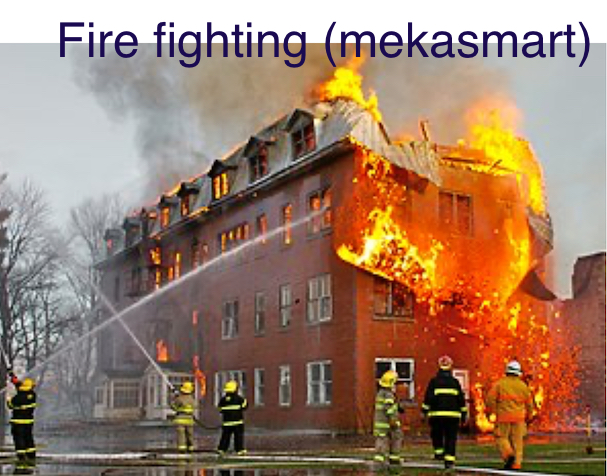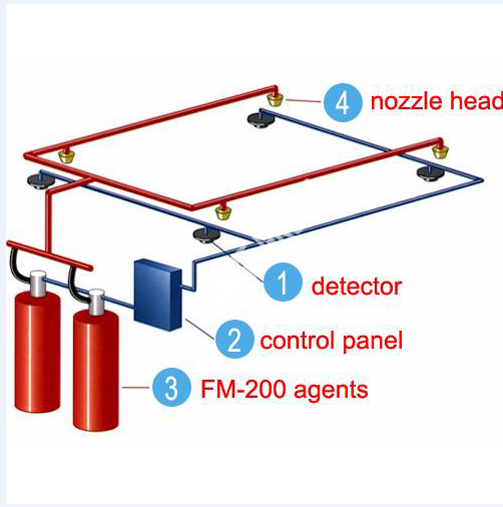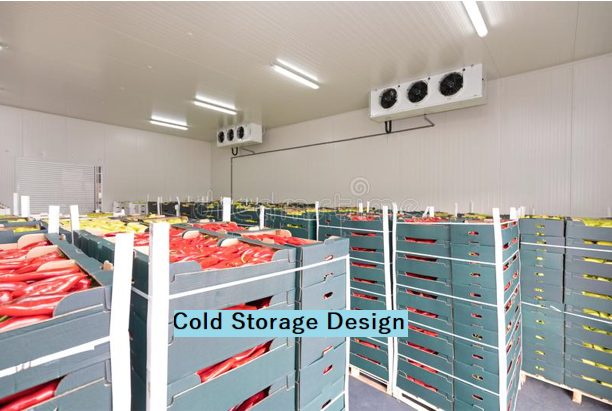Fire fighting is the act of attempting to prevent the spread of and extinguish significant unwanted fires in buildings, vehicles, and woodlands. A firefighter suppresses fires to protect lives, property and the environment.
Fire Fighting
Firefighters typically undergo a high degree of technical training.This involves structural fire fighting and wildland fire fighting. Specialized training includes aircraft firefighting, shipboard fire fighting, aerial fire fighting, maritime fire fighting, and proximity fire fighting.
Also Read; Foam Fire Extinguishing System Calculations Excel Sheet
One of the major hazards associated with firefighting operations is the toxic environment created by combustible materials. The five major risks are smoke, oxygen deficiency, elevated temperatures, poisonous atmospheres, and violent air flows.To combat some of these risks, firefighters carry self-contained breathing apparatus. Additional hazards include falls – a constant peril while navigating unfamiliar layouts or confined spaces amid shifting debris under limited visibility – and structural collapse that can exacerbate the problems encountered in a toxic environment.
The first step in a fire fighting operation is reconnaissance to search for the origin of the fire and to identify the specific risks.
Fires can be extinguished by water, fuel or oxidant removal, or chemical flame inhibition; though, because fires are classified depending on the elements involved, such as grease, paper, electrical, etcetera, a specific type of fire extinguisher may be required. The classification is based on the type of fires that the extinguisher is more suitable for. In the United States, the types of fire are described by the National Fire Protection Association.
Fire fighting triangle
The fire fighting triangle or combustion triangle is a simple model for understanding the necessary ingredients for most fires.
Also Read; Requirements for installation of Fire Sprinkler
The triangle illustrates the three elements a fire needs to ignite: heat, fuel, and an oxidizing agent (usually oxygen).A fire naturally occurs when the elements are present and combined in the right mixture.A fire can be prevented or extinguished by removing any one of the elements in the fire triangle. For example, covering a fire with a fire blanket blocks oxygen and can extinguish a fire. In large fires where firefighters are called in, decreasing the amount of oxygen is not usually an option because there is no effective way to make that happen in an extended area.
 |
| Fire triangle |
The triangle illustrates the three elements a fire needs to ignite: heat, fuel, and an oxidizing agent (usually oxygen).A fire naturally occurs when the elements are present and combined in the right mixture.A fire can be prevented or extinguished by removing any one of the elements in the fire triangle. For example, covering a fire with a fire blanket blocks oxygen and can extinguish a fire. In large fires where firefighters are called in, decreasing the amount of oxygen is not usually an option because there is no effective way to make that happen in an extended area.
Also Read; FM 200 Fire Suppression Calculator ( Excel Sheet )
Fire Fighting HAZARDS CLASSIFICATION
Occupancy hazard classification is the most critical aspect of the sprinkler system design process .
If the hazard is underestimated, it is possible for fire to over power the sprinklers (resulting in a large loss of property or life )
The classification of hazard varies according to the commodities and application of the project .
- Light Hazard
- Ordinary Hazard Group (1)
- Ordinary Hazard Group (2)
- Extra Hazard Group (1)
- Extra Hazard Group (2)





0 Comments